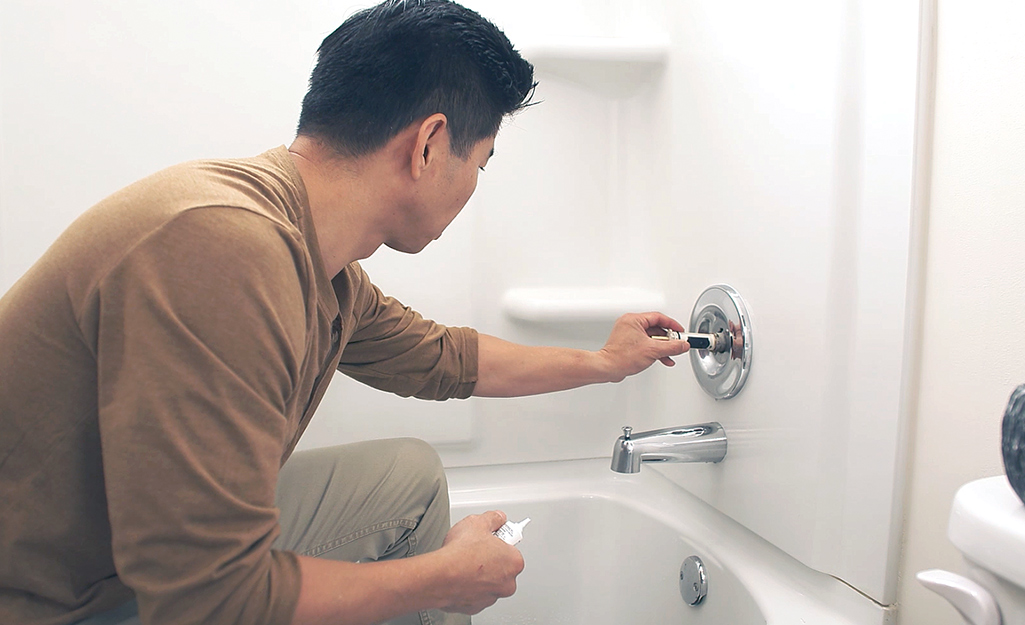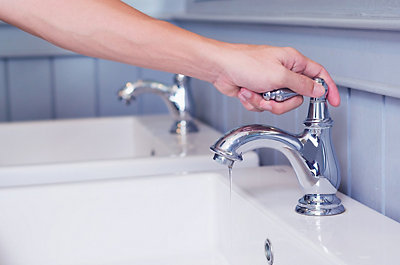We have come across this article pertaining to 4 Common Reasons for a Leaky Faucet down the page on the internet and felt it made good sense to talk about it with you in this article.

Dripping taps might look like a small inconvenience, however their effect exceeds simply the annoyance of the sound. From drainage to incurring unnecessary financial expenses and health and wellness dangers, neglecting a leaking faucet can lead to numerous effects. In this post, we'll explore why it's vital to resolve this usual home issue promptly and successfully.
Wastage of Water
Environmental Influence
Leaking faucets contribute significantly to water wastage. According to the Environmental Protection Agency (EPA), a single faucet trickling at one drip per second can waste greater than 3,000 gallons of water annually. This not just pressures water sources but additionally influences communities and wild animals depending on them.
Step-by-Step Guide to Dealing With a Dripping Faucet
Tools Needed
Before trying to fix a dripping tap, gather the essential devices, consisting of an adjustable wrench, screwdrivers, substitute parts (such as washers or cartridges), and plumber's tape.
Usual Tap Issues and Their Solutions
Identify the type of tap and the certain concern creating the drip. Usual problems consist of worn-out washers, rusty shutoff seats, or defective O-rings. Refer to manufacturer directions or on the internet tutorials for step-by-step assistance on repairs.
Financial Costs
Increased Water Expenses
Beyond the environmental impact, trickling taps can inflate water expenses considerably. The built up wastage with time equates right into higher utility expenditures, which might have been prevented with prompt repairs.
Possible Property Damage
In addition, prolonged dripping can bring about harm to components and surface areas surrounding the tap. Water buildup can cause discoloration, rust, and even structural problems if left neglected, causing additional fixing costs.
Health Worries
Mold And Mildew and Mold Growth
The continuous visibility of moisture from a leaking tap creates a suitable atmosphere for mold and mildew growth. These fungi not just endanger interior air quality but likewise position health risks, specifically for individuals with breathing conditions or allergies.
Waterborne Diseases
Stagnant water in leaking faucets can become a breeding ground for bacteria and other microorganisms, increasing the danger of waterborne illness. Contaminants such as Legionella bacteria grow in stationary water, possibly bring about severe diseases when consumed or inhaled.
Do it yourself vs. Expert Repair
Advantages and disadvantages of DIY Repair
While some may attempt to take care of a trickling faucet themselves, do it yourself repairs feature their very own set of challenges. Without correct understanding and tools, do it yourself attempts can exacerbate the concern or bring about insufficient repair work, extending the issue.
Advantages of Hiring a Specialist Plumber
Employing a professional plumber guarantees that the underlying reason for the dripping tap is addressed effectively. Plumbing professionals possess the competence and equipment to identify and fix tap problems effectively, saving time and minimizing the threat of further damages.
Ecological Responsibility
Individual Contribution to Conservation
Taking responsibility for taking care of trickling taps lines up with wider initiatives toward water conservation and environmental sustainability. Every person's activities collectively make a significant influence on preserving priceless sources.
Sustainable Living Practices
By prioritizing punctual repair work and taking on water-saving behaviors, people add to lasting living methods that profit both existing and future generations.
Safety nets
Routine Upkeep Tips
To avoid dripping taps, perform routine maintenance such as cleaning up aerators, examining for leaks, and replacing worn-out parts quickly. Furthermore, think about setting up water-saving gadgets or upgrading to much more reliable components.
Relevance of Prompt Fixes
Addressing trickling taps as quickly as they're seen prevents further water waste and potential damage, eventually conserving both water and cash over time.
Impact on Residential Or Commercial Property Value
Understanding of Well-Maintained Home
Keeping a property in good condition, consisting of addressing maintenance issues like dripping taps, boosts its viewed value and value amongst potential purchasers or lessees.
Influence on Resale Value
Characteristics with well-maintained plumbing components, consisting of faucets, command greater resale worths in the real estate market. Addressing dripping faucets can contribute to a favorable impact throughout residential or commercial property inspections and settlements.
Final thought
Attending to a dripping faucet goes beyond mere convenience; it's an important action toward conserving water, reducing financial costs, and safeguarding wellness and residential property. Whether via DIY repair services or professional support, doing something about it to take care of dripping faucets is a tiny yet impactful means to promote liable stewardship of sources and contribute to a healthier, a lot more sustainable future.
How to Fix a Leaky Faucet: Step-by-Step Repair Guide
A leaky faucet may seem like a simple annoyance, but if it's not fixed promptly, that leak could cost hundreds to potentially thousands. From water damage to mold, mildew, and high water bills, even a tiny leak can be catastrophic if left unattended. Damage like this can even affect the overall value of your home, so it's important to take the right approach for leaky faucet repair. You may need the help of a plumber in some cases, but we've got a few tips you can try on how to fix a leaky faucet before calling the pros.
Four Faucet Types
When you're learning how to fix a leaky faucet, the first step is knowing what kind of faucet you're working with! There are four common types.
Cartridge Faucets
Cartridge faucets come in one- or two-handled varieties. In one-handled cartridge faucets, hot and cold water combines in a single cartridge. In the two-handled versions, hot and cold water are controlled separately and mixed in the faucet.
Ball Faucets
Ball faucets have a single lever you push up and down to adjust the pressure and rotate to change the temperature. A slotted metal ball controls the amount of water allowed into the spout.
Compression Washer Faucets
They're the oldest type of faucet, but they're still used in many homes — especially older ones. Compression faucets have two separate handles that, when turned, raise or lower the washer that seals a water valve. This valve stops water from flowing through the faucet when it is turned off.
Disc Faucets
Disc faucets rarely need to be repaired due to their maintenance-free design. The water flow is controlled by two discs — the upper one raises and lowers against a fixed lower disc, creating a watertight seal. If your disc faucet starts leaking, you may need to replace the seals or clean residue buildup from the inlets.
Fixing a Leaky Faucet
Step 1: Turn Off the Water
Whether you're learning how to fix a leaky bathtub faucet or how to fix a leaky kitchen faucet, always turn off the water supply to your working area when you're fixing a leak. The last thing you want is a flood added to your list of things to fix.
Look for the shutoff valves below your sink or around the tub and turn them clockwise to stop the water flow. If your faucet doesn't have shutoff valves, you may need to turn off the water for the whole house. Check to make sure it's off by turning the faucet on. If nothing comes out, you're ready to start the repair.
Step 2: Take Apart the Faucet
How you disassemble your faucet depends on the type of fixture you have. You can use a flathead screwdriver to remove the caps on top of the handle or handles for cartridge and compression faucets. Inside, you should see handle screws. Unscrew these with a screwdriver to remove the handle.
Disc- and ball-style faucets will typically have an inlet screw near the handle, and removing that will reveal the interior of the faucet.
Detach the Valve Stem
For cartridge- and compression-style faucets, you'll see the inner valve stem or cartridge once you remove the faucet handles. If you have a compression faucet, unscrew the brass valve stem. If you have a cartridge faucet, pull out the cartridge. If your cartridge has been in place for a while, it may require some tools or extra force to remove it due to mineral deposits.
Examine and Replace Parts
Once you've removed the parts, check them out to confirm what needs to be replaced. You may see corroded rubber washers, O-rings, stems, or cartridges. On a ball-style faucet, check the seats and springs for damage.
If you need to repair a leaky disc faucet, check the inlet and seals on the lower disc.
Once you determine what parts must be replaced, visit your local hardware store. Bring the damaged parts with you to ensure you can purchase the correct components to replace them.
Clean Valves and Faucet Cavity
If you've removed a stem or cartridge, you may notice mineral buildup in the faucet's threads. Use white vinegar to clean the valve seat by soaking it for a few minutes, then scrub it away with a soft toothbrush and rinse with warm water. You can also clean the interior of the faucet in the same way.
Reassemble the Faucet
Once your faucet is cleaned and the required parts have been replaced, it's time to reassemble it. Put the pieces back together and slowly turn the water supply back on. Doing this slowly is crucial because too much initial water pressure can damage the new hardware you've just installed.
https://homewarranty.firstam.com/blog/how-to-fix-leaky-faucet

As a fervent reader about Should I Repair or Replace a Leaky Faucet?, I was thinking sharing that piece of content was essential. Enjoyed reading our posting? Please quickly share it. Help somebody else locate it. Many thanks for going through it.
Comments on “Which It's Important to Resolve a Dripping Faucet”